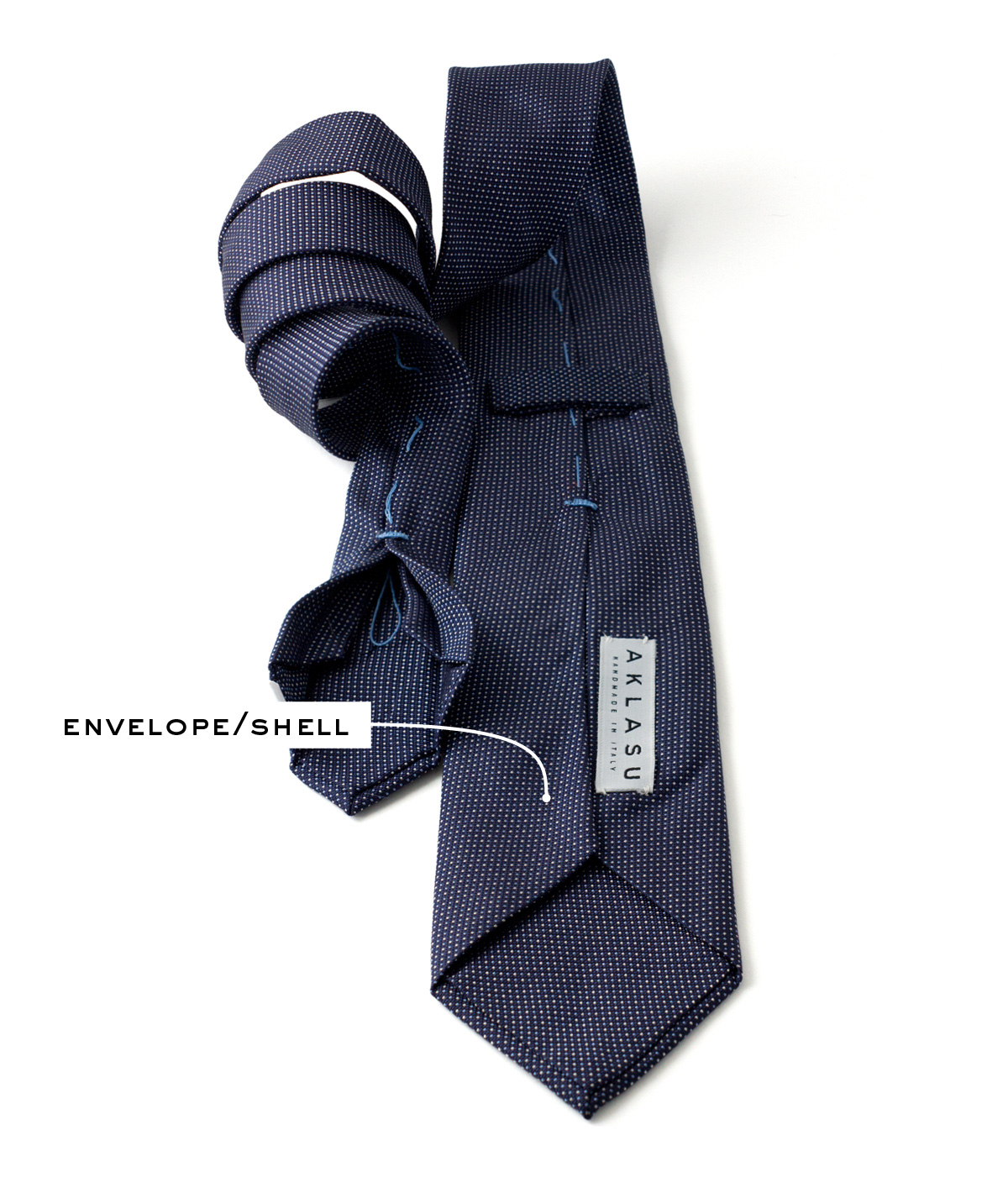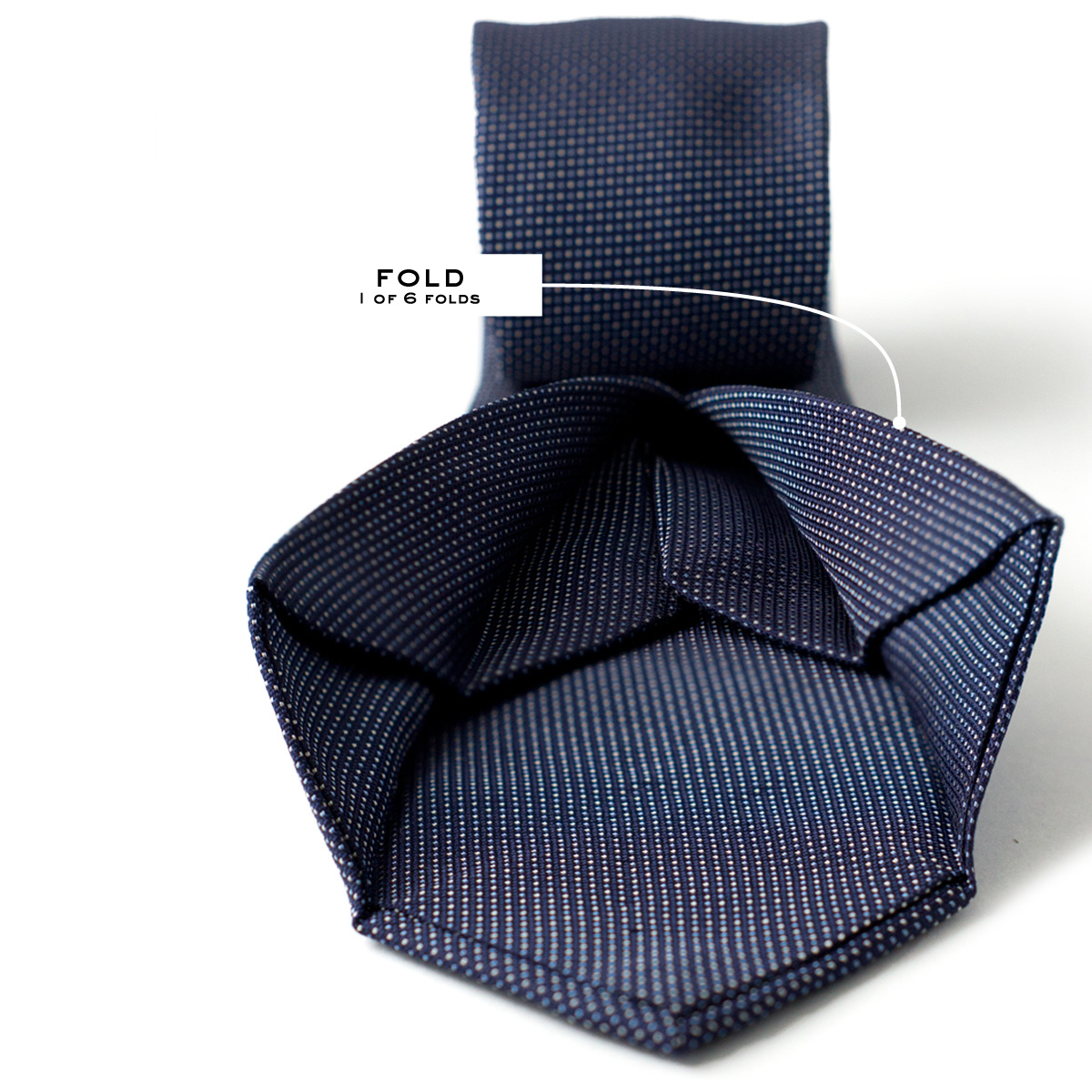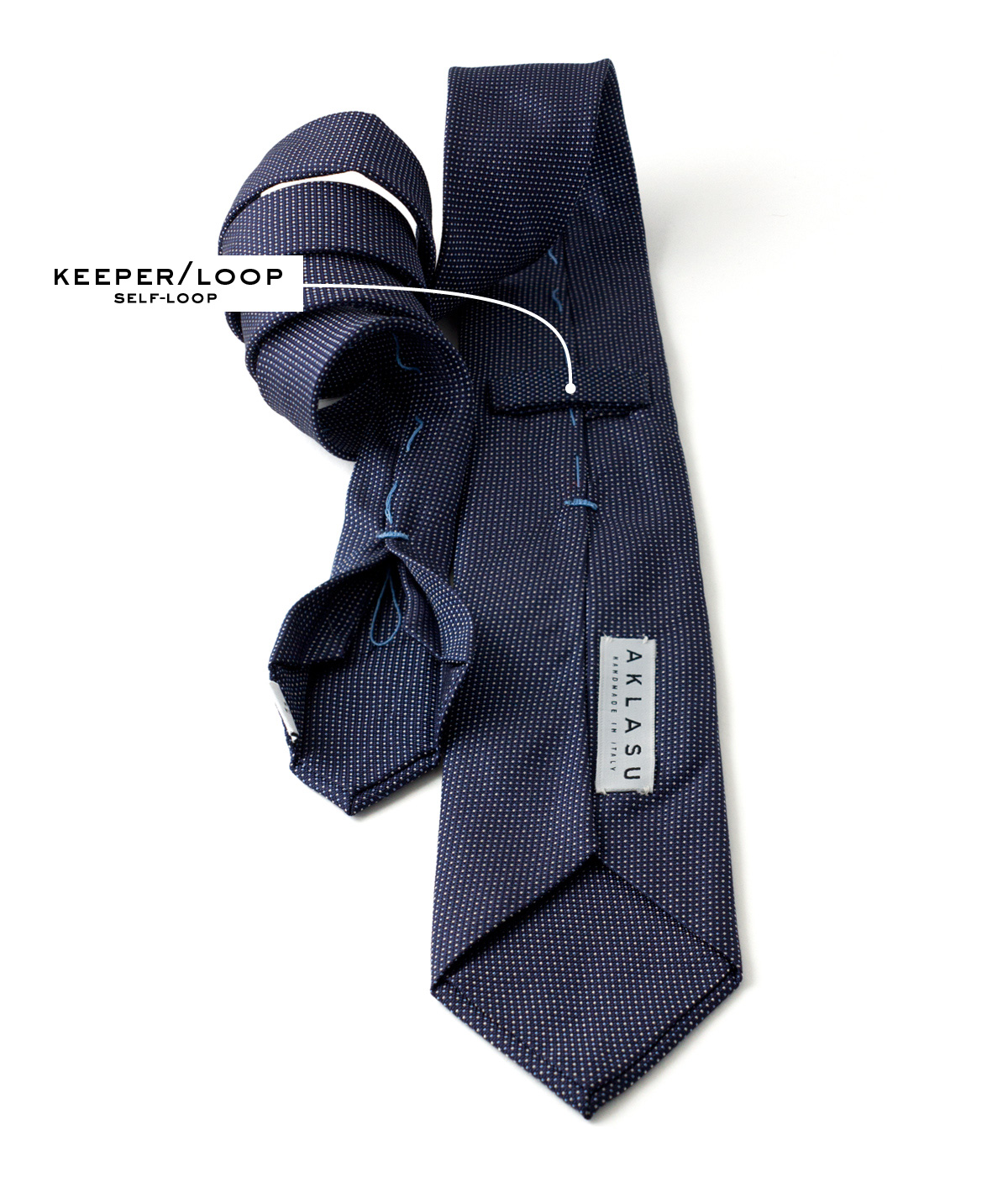There's nothing wrong with buying a tie based on appearance alone. But if you dig past the surface, there's a smarter purchase and better quality tie that lies underneath.
Taking a few moments to look at the tie's construction can reveal a lot about the quality of a necktie. The good news is that you don't need to be a skilled tailor to know the basics of tie construction.
Knowing more about tie construction will make you a more informed buyer ensuring that you purchase ties which are not only beautiful but are built to last.
Let's break down the main elements of a tie. We'll tell you about what to look for the next time you shop for a tie.
Envelope/Shell: Cut on a True Bias
The envelope is the shell of the tie. It can be made from just about any fabric or material. The most common quality fibres are silk, linen, wool and cotton. You can also find some envelopes that are a blend of those fabrics, e.g. silk and wool.
A good quality tie is made of an envelope that was cut on the true bias, which is at 45 degrees from the finished edge of the fabric. The tie won't hang straight or achieve its true elasticity if the envelope is not cut in this manner. The tie won't endure everyday use, and as a result, it will become permanently deformed.


Folds: More is Not Necessarily Merrier
Ties are made by folding fabric. Pictured here is one of our Six-Fold ties. It is produced from a single piece of silk fabric that is folded six times during construction.
Contemporary ties are folded three times. More folds equal more fabric which in turn lends greater weight to the tie, improved drape, and superior knots.
A Note on Folds
The more, the better? We don't think so. It all depends on what you're looking for. Contemporary 3-Fold ties can be equally as good as a Six or Seven-Fold tie.
Ultimately, construction and quality raw materials are the deciding factors. Seven and more fold ties are typically made with no lining due to the vast amount of fabric used. Although they are beautiful artisan pieces, they tend to be too heavy and retain wrinkles due to the lack of lining.
Interlining: Wool Won't Let You Down
The interlining is a piece of fabric, typically wool, that is hidden within the envelope of the tie. The interlining helps give a tie its shape and provide wrinkle resistance. The interlining of a quality tie is constructed with wool since it is wrinkle-resistant, soft and durable. Some manufacturers use cotton or synthetics which are inferior to wool.


Tipping: Self-Tipped Says A Lot
'Tipping' is the material used to finish the reverse side of the tie. Many manufacturers make the tipping with a different, contrasting material than that used for the body or 'envelope' of the tie. If a more inferior fabric is used for the tip, you may want to question the quality of your tie. This approach can at times be a cost-cutting measure.
A self-tipped tie means that the tipping is of the same, high-quality silk as the envelope. A quality tie is likely to be self-tipped but not always.
Loop/Keeper: More Than a Brand Label
The 'loop' or 'keeper' is the band of material on the reverse of the envelope that secures the back blade or 'tail' of the tie. Many manufacturers use brand labels as keepers, but these keepers often fail to withstand the stresses and strains of everyday wear.
As the most functional element of the tie, the keeper must be of a quality material that is well-secured to the envelope. When the manufacturer makes the keeper of the same high-quality material as the envelope (Self-Loop), it's a good sign the manufacturer wasn't taking any shortcuts.

Take a few moments to examine your next tie purchase. It likely looks great, but give yourself peace of mind that the book is as good as the cover.













